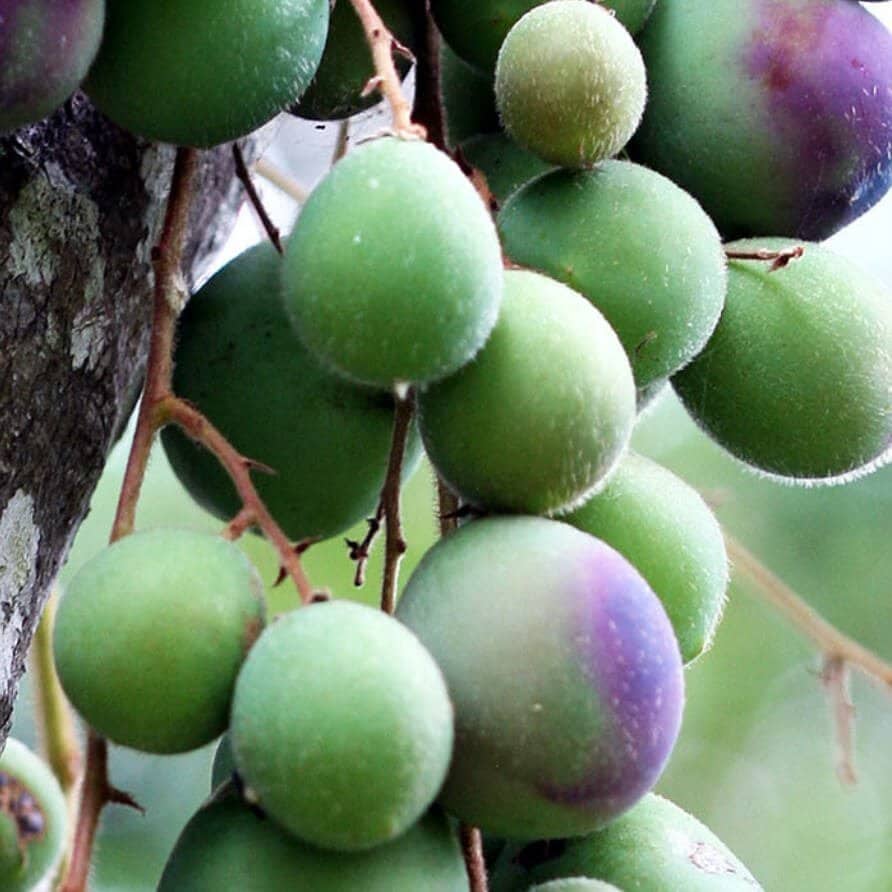Wattleseed (also known as Acacia victoriae) grows all over Australia with most located throughout the arid regions of the Northern Territory and South Australia. Plantations of wattleseed also exist in the south east of South Australia and near the Grampians in Victoria.
Wattleseed is harvested in summer. The ripe seed pods are removed from trees by beating the foliage and collecting them in a tarpaulin or other type of mat placed under the tree. After harvest, the seed is separated from the pod by threshing and sieving, using seed threshing equipment or machinery adapted from other agricultural industries.
A mainstay of the diet of Indigenous Australians for over 40,000 years, wattleseed was traditionally ground and used to make a type of flour. With a hard husk that protects the seed during long periods of dormancy on the ground, wattleseed can survive tough weather conditions and was a valuable source of protein and carbohydrate in times of drought. Indigenous women would collect the pods and parch the seeds with fire, before grinding them into flour to be mixed with water and made into cake. These cakes were baked in the coals of a fire and eaten immediately or stored for later use.
In the Central Desert, damper made from native seeds still forms an important part of the diet for many Indigenous Australians, though store-bought plain and self-raising flour are generally used instead.
Download The Australian Superfood Co provenance map here.
Flavour:
Coffee, chocolate, vanilla, raisin and hazelnut characteristics
Palate:
Dominant nutty, roasted coffee flavour with notes of chocolate and a slightly bitter yet earthy sweet taste on the front palate – with subtle spiced raisin and vanilla notes on the back palate.
Aroma:
Nutty, roasted coffee, chocolate and hazelnut characteristics with subtle tones of sweet spiced vanilla and raisins
Wattleseed is a dark-brown grainy powder resembling coffee in appearance. It has a dominant nutty, roasted coffee aroma and a slightly bitter yet earthy sweet taste with notes of chocolate, hazelnut, raisins and sweet spice.
The flavour intensifies when subjected to heat and then cooled; the best preparation for most wattleseed dishes is to extract the flavour from the ground wattleseed using the same method you would to make coffee in a coffee plunger or espresso machine.
The profile pairs well with dairy (particularly milk, yoghurt, cheese and ice cream), dairy-based sauces and meat-based sauces; infuse it with cream for a delicious pasta sauce. It adds depth to sweet and sour chutneys, pickles and savoury dishes, such as soups, sauces and preserves, slow-cooked meat and vegetable ragu. It enriches egg and vegetable dishes, pasta sauce and breads.
Wattleseed complements red meat, chicken and fish particularly well, especially when enhanced with salt. Use in marinades and sauces or as a seasoning for meat and vegetables before cooking to add subtle smoky barbecue notes.
Use wattleseed in biscuits, cakes, pancakes, bread and other baked goods. It adds a delicious flavour to ice cream, yoghurt, custards and sauces.
In uncooked dishes, let the flavour infuse overnight. For sweet dishes, it blends well with chocolate, vanilla and cinnamon. Try it with cinnamon myrtle, bush tomato or mountain pepper leaf and pepperberry.
Wattleseed makes a good caffeine-free coffee substitute.
Click here for delicious Wattleseed recipes.










